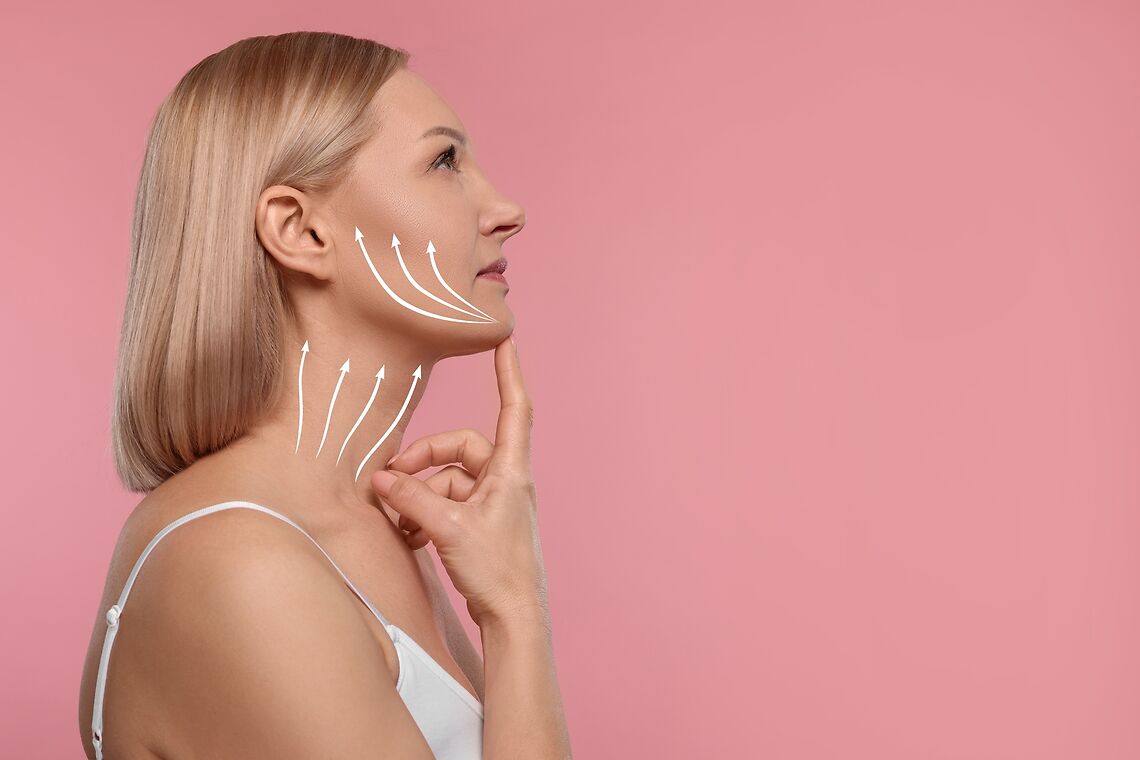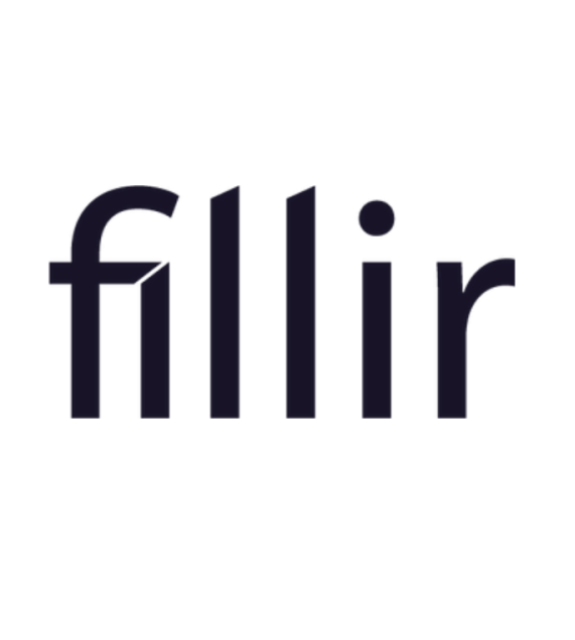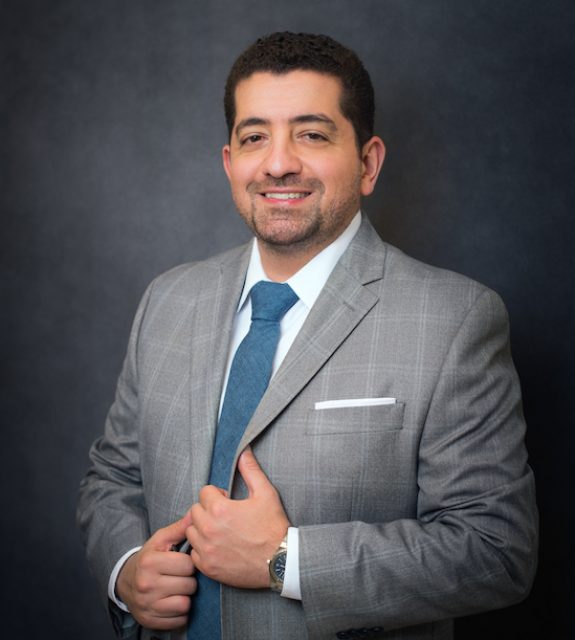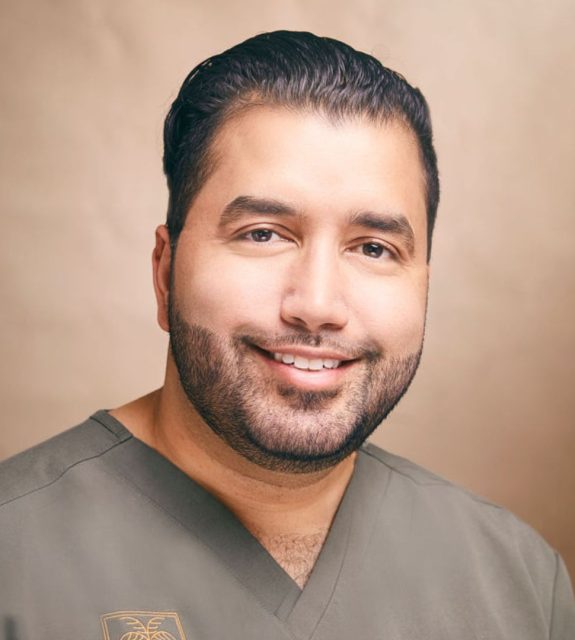Aging is inevitable, but it doesn't need to define us. Here, Dr. Brannon Claytor will share with you several options for aging gracefully and at your own pace! "Each patient comes in with their own set of aging frustrations," Dr. Claytor said. "Aging doesn't happen all at once, but there seems to come a moment when each patient looks at his or her reflection and realizes that the image doesn't reflect the age they feel inside."
There are many options for addressing sagging jowls, loose skin, a bulky neck, and decreased facial volume, and it can be confusing for a patient to determine which procedure will provide the most beautiful, natural result. You want to look like yourself - only a decade or so more rested and vibrant. From the Ponytail Facelift™ to the Deep Plane Facelift or Vertical Restore™ to the SMAS lift - what are the differences, and which one is right for you?
 Photo Credit: Courtesy of New Africa/Shutterstock
Photo Credit: Courtesy of New Africa/Shutterstock
With so many options out there, how should patients determine which facelift technique is best for their goals and facial anatomy?
Dr. Claytor: "Not all patients are the same when it comes to surgical facial rejuvenation. The surgical consult is key to assessing which areas of the face and neck have been most affected by facial aging and genetics and to create a plan with the patient to achieve his or her goals. Loose skin on the neck is often an area of concern due to the high mobility of this area. The midface may have descended due to osteoporosis and depleted facial fat atrophy of the midface, causing volume loss, wrinkling (rhytids), and jowling. The surgical consult enables the patient to express specific frustrations in the facial aging process so that, together with the surgeon, a plan can be created to achieve the patient's goals. This may entail an open platysmaplasty (neck lift) during which the neck muscles are tightened, excess mandibular glands and excess fat removed if necessary, and the skin re-draped to create a smooth, youthful neck.
The deep plane facelift (Dr. Amir Karam has trademarked his technique as a Vertical Restore™, which by design delivers a vertical lift), in the hands of an experienced surgeon, allows for the releasing of the retaining ligaments. This enables the surgeon to lift the SMAS and skin together, repositioning the SMAS (cheek mound) to a more youthful position. The scars are well hidden within the hairline, behind the ear, and within the ear. The Ponytail Facelift™ is basically an endoscopic deep plane facelift. This technique, pioneered by Dr. Chia Chi Kao, eliminates the traditional incisions in front of the ear by using an endoscope to access the ligaments within the face and neck. This surgery is most appropriate for younger patients who do not require extensive skin excision."
What are the most common risks associated with facelift surgeries, and how can patients prepare themselves to reduce the chances of complications?
Dr. Claytor: "The good news is that complications are rare. Issues such as infection and scarring are addressed prophylactically with IV antibiotics and sterile technique, and scarring is minimized by strategic placement of incisions and re-draping at the time of surgery to minimize tension on healing scars. We are also very diligent about scar massage, sun avoidance, and silicone scar cream to minimize the appearance of scars.
An opportunity to avoid post-operative frustration with results that don't match the patient's desires can be addressed with a thorough consultation process so that the patient can explain what it is that they are hoping to achieve, and the surgeon can then explain to the patient which procedure will accomplish these goals.
Post-operative recovery can be an arduous process, with swelling, bruising, and temporary numbness at the operative sites among those associated with facial rejuvenation surgery. By performing the deep plane facelift under tumescent local anesthesia, I am able to talk with the patient throughout the surgery. This gives me immediate feedback as to how the patient is feeling and enables me to keep the patient comfortable and pain-free throughout the process. It also enables me to move through the procedure expeditiously, and we find that patients experience far less swelling. In fact, most of our patients experience very little bruising or swelling and are back to their work and social lives within two weeks. I certainly do perform this under general anesthesia for those patients who chose this pathway, but about 90% of our patients choose to have their deep plane facelift performed under tumescent local anesthesia."
How do the recovery timelines differ between various facelift techniques? Are certain methods less invasive or require shorter recovery periods?
Dr. Claytor: "The recovery times are quite dependent on the skill and efficiency of your surgeon. Choose a surgeon who is board-certified in plastic surgery or facial plastic surgery. Be sure they have the training and experience to perform the surgery they are recommending and show you photographs of other patients who look like you so you can visualize what your own results would look like."
Can you discuss the safety risks involved with each type of anesthesia and how patients can minimize these risks during their facelift procedure?
Dr. Claytor: "We spoke a bit about this earlier, but there are always risks associated with surgery. The goal is to minimize the risks for the patient. Tumescent local anesthesia enables the surgeon to keep the patient pain-free and comfortable throughout the surgery. The patient is awake and interacting with the team throughout. I am able to constantly assess the patient's comfort level in real time because she or he will share this with me. Tumescent local anesthesia avoids the post-surgery nausea caused by general anesthesia. Our patients are generally ready to go home with their caretakers within 30 minutes of the completion of the surgery. Their pain level is managed with medication after they go home, and most find they are comfortable using only acetaminophen for pain for 1 to 2 days following surgery. They return the next morning for their post-op exam when I check their incisions, then re-wrap them. They return in a week to have sutures removed, but the team and I check in with them frequently to assess their progress."
For more information, visit Dr. Brannon Claytor's social media:





















